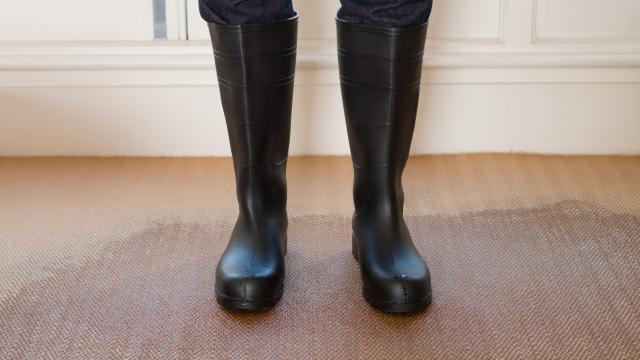Anyone who has experienced any sort of flooding in their home—whether it was a burst pipe, a storm-related incident, or a toilet that picked your vacation week to start leaking—knows that water is your home’s biggest enemy. Water damage is exponentially worse when it involves carpeting—and even worse if it’s carpet you can’t replace, either because your landlord won’t allow it or because you simply can’t afford to do so. But if you can’t get rid of a waterlogged carpet, you can dry it out and keep it in place—if you act fast and use the right tools.
Dangers of wet carpet
What does act fast mean? It means start immediately; mold and mildew will start growing in your carpet within 24-48 hours after coming into contact with water. This is not the time to deliberate—mold can have some pretty serious negative health consequences.
But before you leap into action, you need figure out what kind of water you’re dealing with in the first place. White water is clean water—rain or fresh water from a burst pipe. Gray water is dirty water that hasn’t been in contact with human waste—anything that’s been down a drain. Black water is water that has come into contact with human waste—sewage. If your carpet has been soaked with gray or black water, it’s got to go—no amount of cleaning will make it safe to keep around.
Drying out carpet
If your carpet is wet from relatively clean water, you can dry it out and salvage it. This isn’t a quick or easy process, but if you put in the time, it will work. Here’s what to do:
- Remove furniture. Clear out the space. Remove everything sitting on top of the carpet. If you don’t, moisture will remain trapped underneath no matter what else you do—and you might need to temporarily remove the carpet later.
- Remove water. Step one is to remove the saturated water from the carpet. Your best bet is to rent a carpet extractor. These are used as professional carpet-cleaning machines, but they also have a powerful vacuum function that can suck water out of a carpet much better than the shop vac you have in the basement. If you can’t find an extractor to rent, in fact, see if you can rent a carpet shampooer, which will have a similar capability—just don’t use the cleaning aspect. If you can’t get your hands on either one, use a shop vac—but work in small sections and be prepared to be very patient.
- Towels. Once you’ve sucked out as much water as possible, use towels to press out residual dampness.
- Fans and dehumidifiers. A carpet blower is a special kind of high-powered fan that is designed to dry out carpets and other flooring. Get a few and set them up around the carpet and let them run. Simultaneously, rent the biggest dehumidifier you can get and let it get to work pulling moisture out of the space.
- Remove pad. Once your carpet is dry to the touch, remove it from the floor. If your carpet has a pad installed underneath, tear it up and throw it away—there’s no saving the pad. Even if it looks dry, it will almost certainly mold up eventually. Make sure the floor under the carpet is dry and sanitized, then replace the carpet (and pad, if you need to).
- Clean. Just because your carpet is now dry doesn’t mean it’s safe. Sanitize the carpet by giving it a thorough cleaning.
If you go through all of this, you can now safely go back to your regularly scheduled life and feel safe having that carpet in your home.

Leave a Reply
You must be logged in to post a comment.